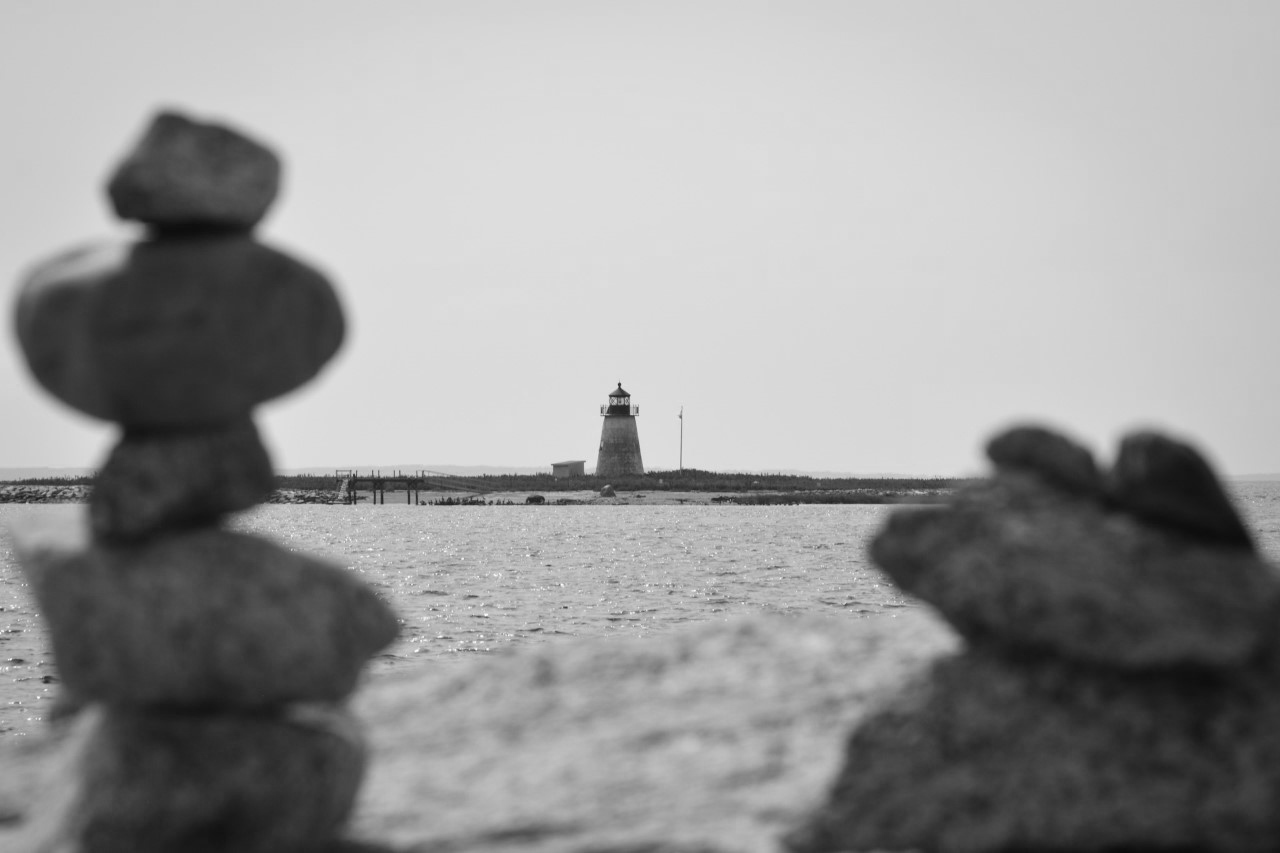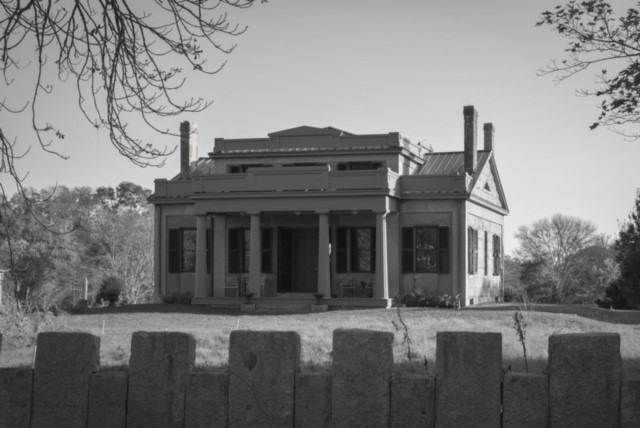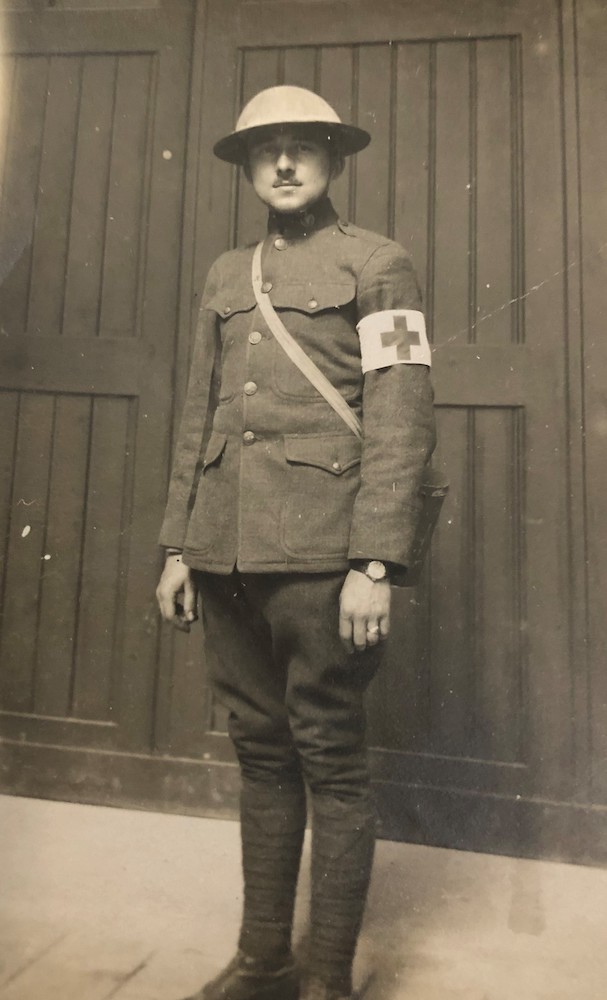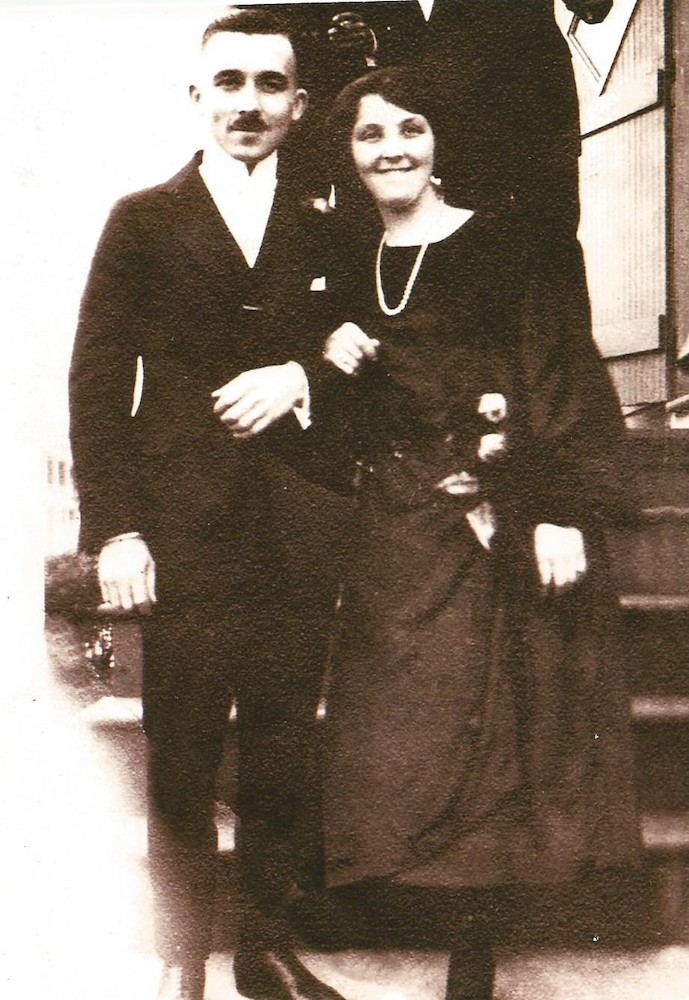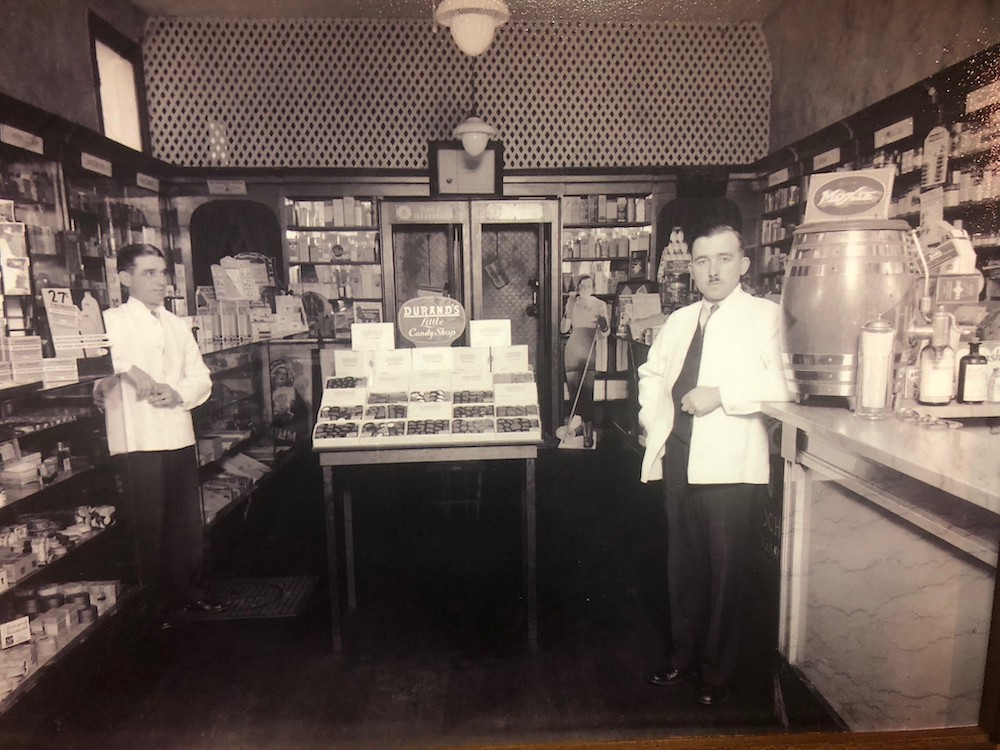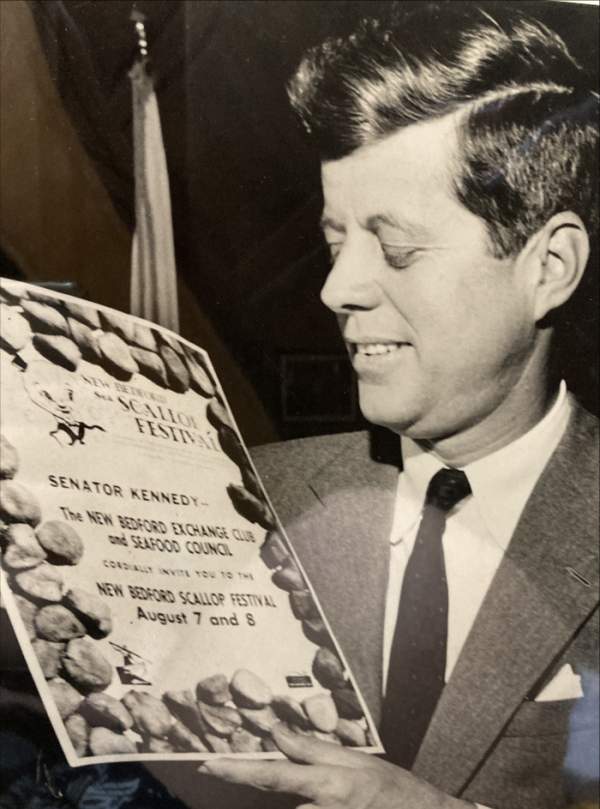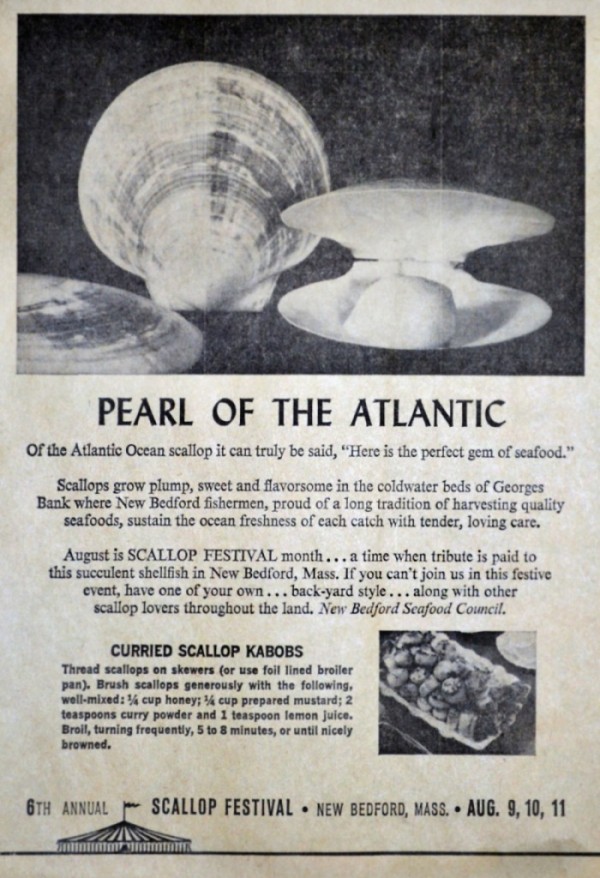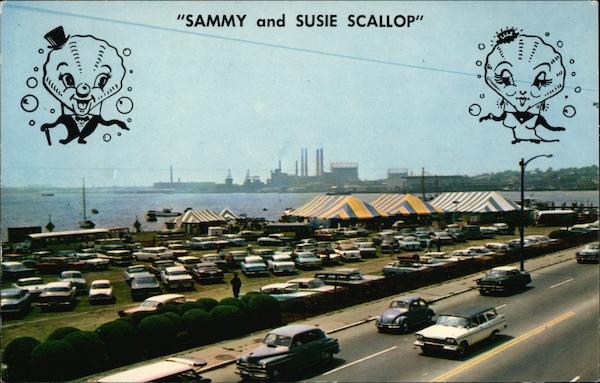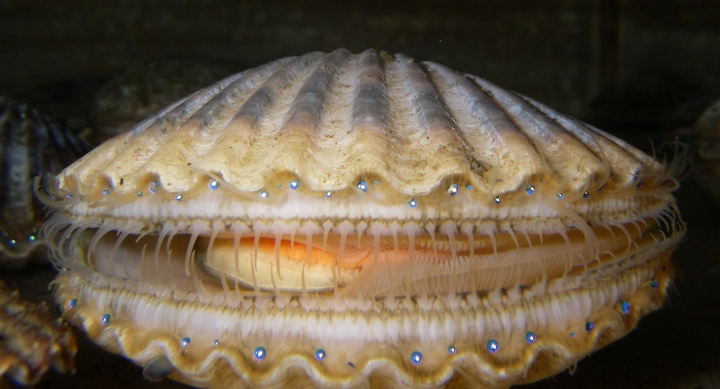Fort Taber Flag To Honor Albert S. Broadland – WWII Veteran Earned The Silver Star, Air Medal
During the month of December, the 28th Lights for Peace flag to fly at the Fort Taber – Fort Rodman Military Museum honors the memory of Albert S. Broadland, formerly of 17 Buttonwood Street, New Bedford, who served his country honorably during WWII with the 98th Bombardment Group of the United States Army Air Corps.
Albert was born on September 2, 1913 in South Dartmouth, MA. He spent most of his life as a resident of New Bedford. He graduated New Bedford High School in 1933 and attended New Bedford Textile School. He was employed by Morse Drill and Machine Company before being inducted into the U.S. Army Air Force on Feb. 14, 1941 at the age of 27. He served with the Coast Artillery at Fort Wright, NY before volunteering for overseas duty on the day Pearl Harbor was attacked.
Broadland earned the rank of TSgt. (Technical Sergeant) as an airplane maintenance chief and aerial gunner. He served from March 14, 1941 to May 31, 1945, participating in numerous battles and earning both the Silver Star and Air Medal for his courageous efforts.
According to an undated Standard-Times article Broadland narrowly escaped injury while assigned to an Army Transport Service as a gun crew member. While serving aboard the Army Transport he made three trips to Iceland, one to Scotland and one to Africa and Egypt. On one of these trips, his transport was sunk by an enemy submarine and he barely escaped with this life.
Broadland went on to receive his Gunner’s Wing in 1942 and flew his first mission over Munich in June of that year. He participated in major bombing assaults in all parts of the Balkans, Austria, Germany and Northern Italy.
He earned the Silver Star for “Gallantry in action as an aerial gunner on a B-24 Liberator Bomber.” The presentation was made by Brigadier-General Hugo P. Rush, his Wing Commander at a heavy bomber base in Italy. The citation reads: “On July 1, 1944, as waist gunner of a B-24 type aircraft, Sgt. Broadland participated in a bombing mission against an enemy aircraft factory in Germany. Arriving in the target area, such intense anti-aircraft fire was encountered that fragments struck an ammunition box in the tail of this aircraft causing the ammunition to explode. Instantly realizing the grave danger to his plane and crew, Sgt. Broadland, with utter disregard for personal safety, picked up the still exploding ammunition box and threw it from the plane. Sgt. Broadland’s quick action unquestionably saved his aircraft and crew from serious damage and enabled them to continue on and drop bombs squarely on the target.”
According to the citation, Broadland participated in 35 successful missions against the enemy. “By his outstanding gallantry, initiative and devotion to duty, as evidenced throughout 35 successful missions against the enemy, Sgt. Broadland has reflected great credit upon himself and the armed forces of the united States of America.”
Throughout his army career, Broadland traveled 200,000 miles of ocean, sailing twice around the globe and landing on every continent. He crossed the Atlantic Ocean eight times, the Indian Ocean four times, and the Pacific Ocean twice. According to a Standard-Times newspaper article, “Broadland crossed the equator 10 times, making him a full fledge member of the Sons of Neptune.”
Marineinsight.com explains that “seamen who have crossed the equator are referred to as Shellbacks or Sons of Neptune.” This unofficial term comes from the belief that “King Neptune is said to be the ruler of the seas.” Celebrations are often held to “appease the King by showing him respect, to keep a sailor away from the perils of the sea and to bring good luck.”
The Army Air Corps Museum provides details on the 98th Bombardment Group’s movements during TSgt. Broadland’s service as follows. The unit was activated on February 3, 1942 and moved to the Mediterranean theater in July 1942. The Bombardment Group entered into combat in August 1942, bombing shipping and harbor installations in Libya, Tunisia, Sicily, Italy, Crete and Greece to cut enemy supply lines to Africa. They also hit airdromes and rail facilities in Sicily and Italy. The unit received a Distinguished Unit Citation for action against the enemy in the Middle East, North Africa, and Sicily from Aug 1942 to Aug 1943. The unit was also awarded another Distinguished Unit Citation for participation in a low-level assault on oil refineries at Ploesti, Romania on August 1, 1943. Afterward the group flew many long-range missions to Italy, France, Germany, Austria, Czechoslovakia, Hungary, and the Balkans to bomb such strategic targets as industries, airdromes, harbors, and communications
TSgt. Broadland honorably served his country and earned the following awards for his service: The Good Conduct Medal, The Air Medal with 3 oak leaf clusters, The Silver Star, American Defense service medal, European African Middle Eastern Campaign Medal, Asiatic Pacific Theatre Ribbon with 4 service stars and the American Theater Campaign Ribbon.
Albert S. Broadland passed away at the age of 80 years old on November 21, 1993. He was the son of the late Mr. and Mrs. Ole S. Broadland and the husband of Helen Broadland of New Bedford, MA.
Linda Ferreira, of Empire Ford of New Bedford, researches the life histories of area residents. American flags are provided by Empire Ford of New Bedford. Flags are raised by the staff at Fort Taber – Fort Rodman Military Museum. Those who would like to honor a local veteran in the future can contact Ferreira at lferreira@buyempireautogroup.com.

